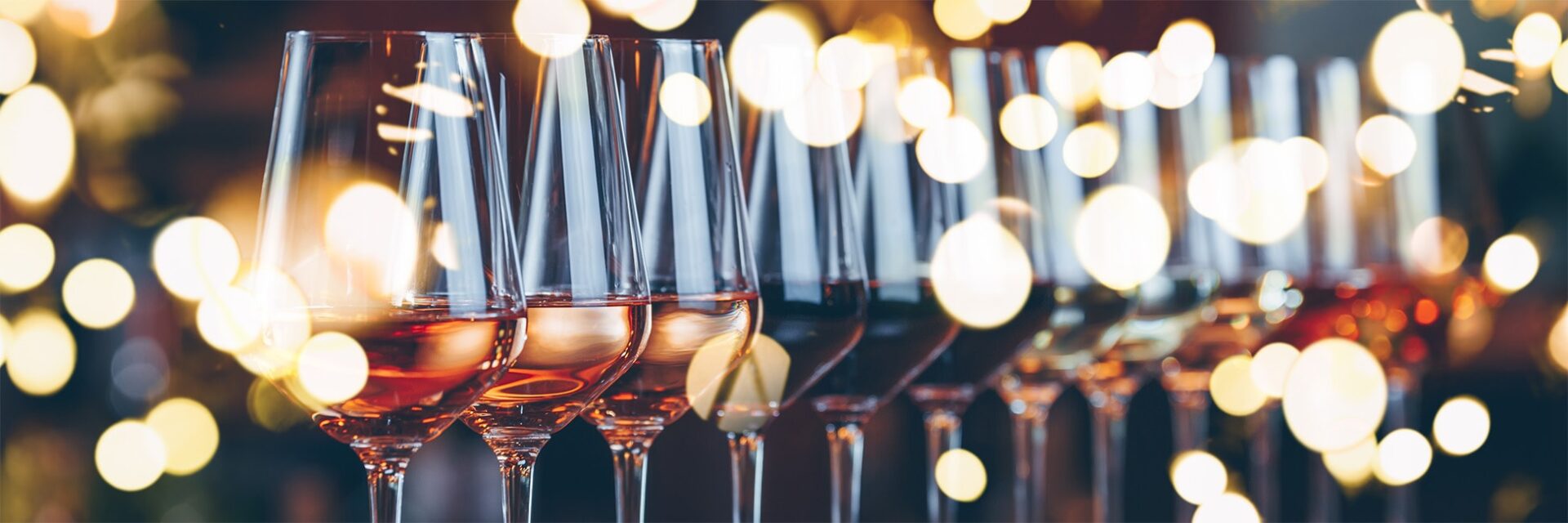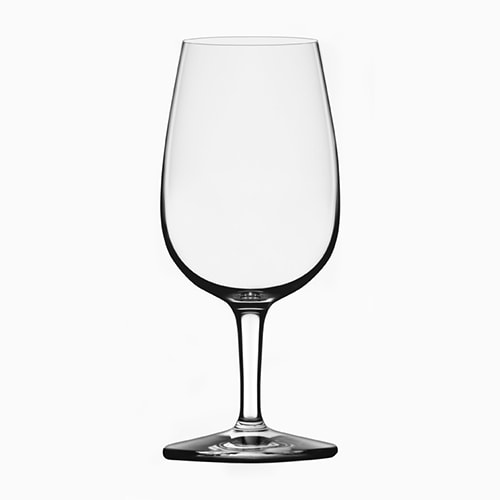In 1970, the ISO (International Standards Organization) designed the specification for these glasses.
At that time, they formed a panel of professional wine tasters to advise them on the ideal tasting glass for all professional wine tastings.
Specifically, this panel included the infamous Michael Broadbent MW. Then in 1972, this glass, also known as the INAO glass, received its ISO standard.
Now, the INAO, which is the Institut National des Appelations d’Orgine de France, recommends this professional tasting glass.
Types of glassware
In times past things were simple. You had a copita for the serious analyst, a snifter for the connoisseur and the rest of us made do with a rocks glass.
Times have changed and the last decade or so has seen an outpouring of glassware to maximise the enjoyment of a spirit and enhance its organoleptic attributes.
Some are more aesthetically pleasing, designed for style over performance. Others claim to be ergonomically and scientifically designed to bring out the best of what is in the glass.
Angus Winchester, Director of Education at Bar Convent Berlin, explains, “While personally I would use a sherry copita when tasting and learning about fine spirits as long as I am tasting and learning about fine spirits and the glass is clean and consistent I am a happy camper.”
The array of glassware available is overwhelming. It seems that every spirit category now has its own specially designed glass.
Herein lies part of the problem. Each of us has our own idea of what the perfect glass is.
Our own partiality to a particular idea of form and function can sway our opinion before we even pick up the glass.
If the shape of the glass is too far removed from our pre-conceived notions of what is correct then we are already stacking the deck unfairly, regardless of its merits.
Likewise, if the glass doesn’t feel right in our hand or the glass is too thick, it can be difficult to get beyond this and give the spirit a fair assessment.
Nose vs. Palate
Whilst many glasses focus on maximizing olfaction, several others focus more on liquid dynamics and how the spirit flows from the glass over the tongue.
Unfortunately a lot of the logic here is based on the outdated idea of the tongue map, whereby we are sensitive to sweetness on the tip of our tongue, bitterness at the back, acidity along the sides and thus to get a full appreciation of the flavors it is necessary to have a wider flow of liquid from the glass and therefore a flared rim is far more effective.
A convergent rim would simply deliver a narrow beam of liquid to a very localized part of the tongue and therefore you would be getting a one-dimensional profile.
The idea of a “one tongue map fits all” has long been disproved. Everyone’s palate is different, some of us with more or less papillae that make up our taste buds and some of us more or less sensitive to various textural stimuli (fats, oils, tannins, etc.).
Perception of flavor is individual, as is where on our tongue and throughout our palate we are most sensitive to bitterness, acidity and sweetness (although we can detect all basic tastes to some degree throughout our tongue).
To compound things further our sensitivities can change over time, especially as we become more familiar with and tolerant to various spirits.
Therefore, there is still a good deal of merit to the idea of getting as broad a flow of liquid onto the palate as possible to ensure that we get the full spectrum of flavors and to this end a glass with a divergent rim seems the most likely to be able to achieve this.
However, the same results could likely be accomplished by simply swirling the liquid in our mouth.
For me the biggest flaw with the idea of a perfect glass is that we are all imperfect. Our perceptions of aroma and flavour are as distinct from one another as our preferred tipple.
What one person may find enjoyable another may find unbearable. Personal preference will always surpass anything that a glass may be able to hide or enhance.
Whilst the shape, size and design of the vessel can all certainly impact how a spirit is initially perceived, it will ultimately be our own notions of the good, bad and indifferent that will dictate our appreciation of or ambivalence toward any particular dram.
Content credit: https://www.wsetglobal.com/knowledge-centre/blog/2019/april/02/is-glassware-as-important-for-spirits-as-it-is-for-wine/


